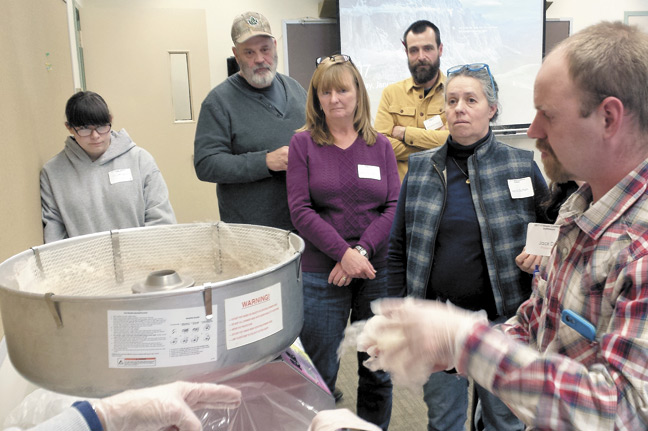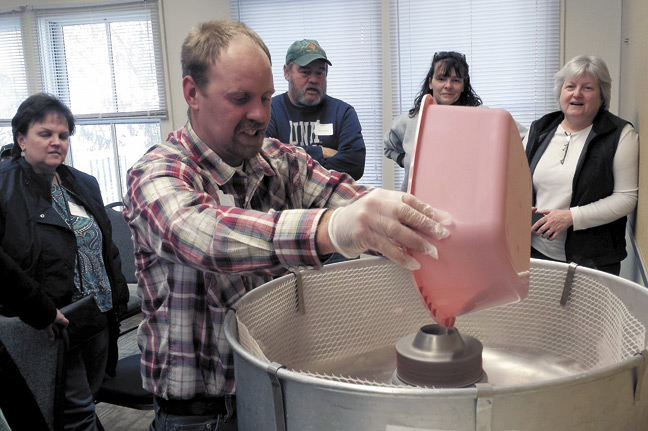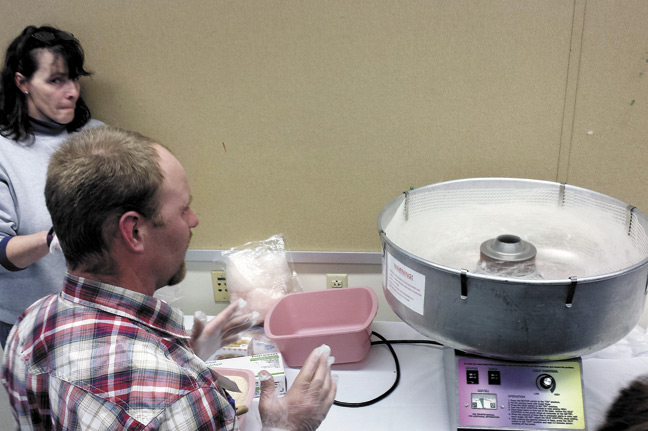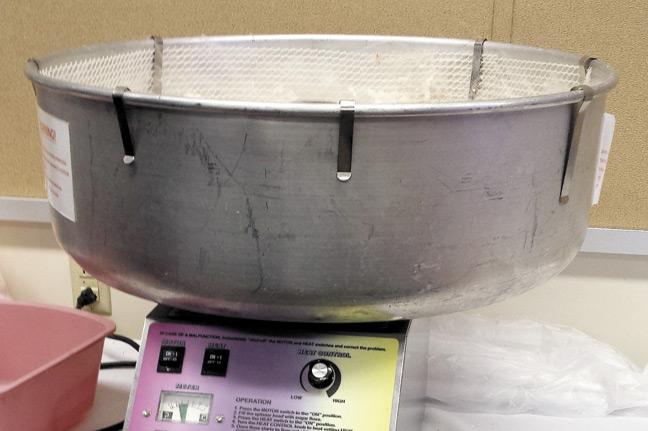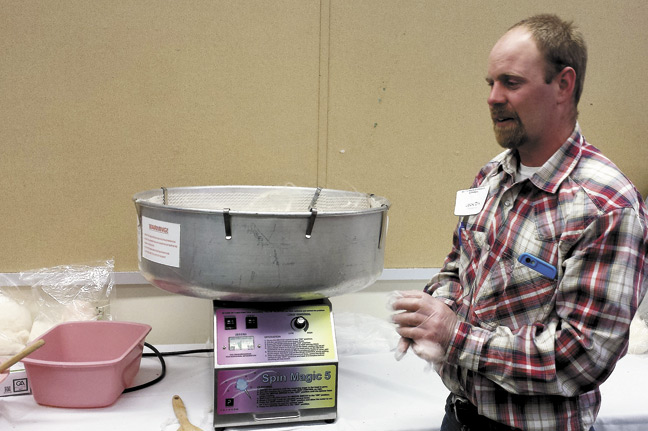Candy & Cream
Cotton candy equals cash
Sugarmakers get scoop on most profitable confection
By PAUL POST | MARCH 2017
BRATLLEBORO, Vt. — Maple cotton candy can be a fun path to sweet success, for groups or individuals.
But there’s a knack to making it, which involves no small amount of attention to detail.
Jack Dix, an employee at Corse Maple Farm in Whitingham, Vt., explained the process and demonstrated techniques to a class at the Jan. 21 Winter Maple Conference in Brattleboro, Vt.
“It’s a very simple thing, but it’s important to pace yourself,” Dix said. “You get further ahead by slowing down.”
People stand in long lines for the treat at The Big E, the Eastern States Exposition in West Springfield, Mass., where foods from throughout New England are showcased each year.
Dix goes there on weekends during the fair to make cotton candy for the Vermont Maple Sugarmakers Association. It’s his way of giving back to an industry that makes his livelihood possible.
“When made correctly, there’s nothing quite like the taste of light, fluffy maple cotton candy right out of the machine. When it’s still warm is when it’s best,” Dix said.
For many years, Kim Therrien, co-owner of Therrien’s Sugarhouse, made cotton candy for Windham County Sugarmakers at the annual Strolling of the Heifers parade in Brattleboro.
“My husband and I did it year after year,” she said. ”Sometimes we’d sell up to 500 bags in a day. “We had two machines going all the time.”
A machine in good working order can turn out a bag per minute. At $5 per bag, this can net handsome profits -- $300 per hour.
“There’s very little cost once you buy the machine,” Dix said.
Price tags might be in the $1,200 to $1,300 range. However, he demonstrated with a Paragon International Spin Magic 5 Cotton Candy Machine with Metal Bowl. It lists for $620.99 at the website walmart.com.
Ingredients, of course, are critical to any good finished product.
Dix suggested using a 5-to-1 mixture of fine white baking sugar and granulated maple sugar. On damp days, the ratio should be 6-to-1. The two types of sugar should be blended together in a container.
“Every machine is different,” Dix said.
The ratio might have to be altered a bit during the day depending on how cotton candy comes out.
“Baking sugar isn’t your conventional sugar,” he said. ”You do have to look a little to find it.”
Machine set-up is fairly easy. Plastic netting, which strands of fresh cotton candy cling to, is attached inside the large bowl with evenly spaced out metal clips.
It’s important to turn blowers on first, for 15 to 20 seconds, before the motor. Then turn the heat up to let crystals blow through, Dix said. Once the sugar is in there keep consistency at a steady pace.
He suggested adding no more than a quarter- to a half-cup of sugar at a time.
Most machines are equipped to handle a special “maple head” with larger holes. Strands of cotton candy come out easier, to keep granules from burning.
“That’s why you can’t use just maple sugar,” Therrien said. “It will burn.”
Dix held up a small sample of scorched cotton candy to show what can happen if it isn’t made right.
“The consumer doesn’t want this,” he said. ”This is what gives cotton candy a bad name.”
As the machine whirs into action, strands start to appear around the inside of the bowl. Some people use a spatula or wooden spoon to get it out. Or, with plastic gloves, it can be done by hand.
“It’s just a matter of timing when you take it out,” Dix said. ”You don’t want to rush in to grab it.”
In addition to tasting better, light fluffy cotton candy is preferable because it only takes two handfuls to fill a bag instead of three or four, which cuts down on sugar costs.
The class was called ”Maple Cotton Candy 101.” But it might just as well have named ”Easy Does It” because that’s the key to putting smiles on people’s faces, and avoiding costly repairs and loss of income from downtime.
At day’s end, use soap and hot water to clean the stainless aluminum metal bowl and turn it upside down to let it drain properly. ”There’s very little maintenance to these machines. Cotton candy cleans up very easily. But you tend to wear quite a bit of it,” Dix said, smiling.















